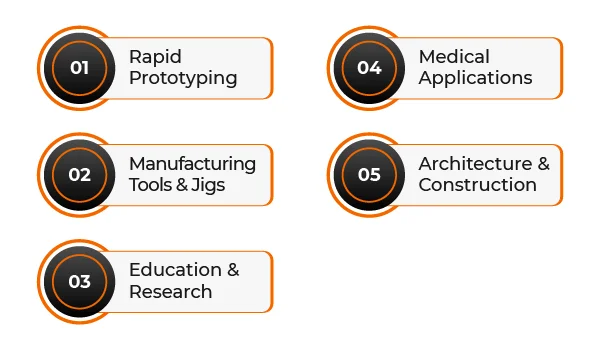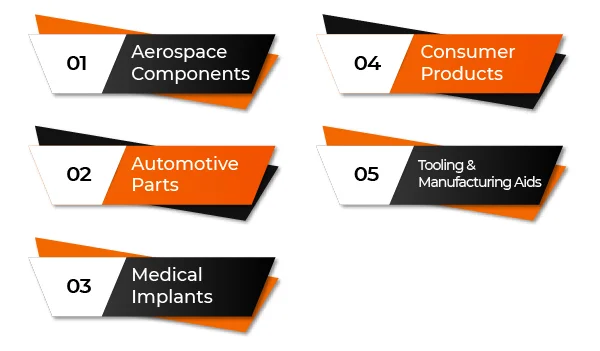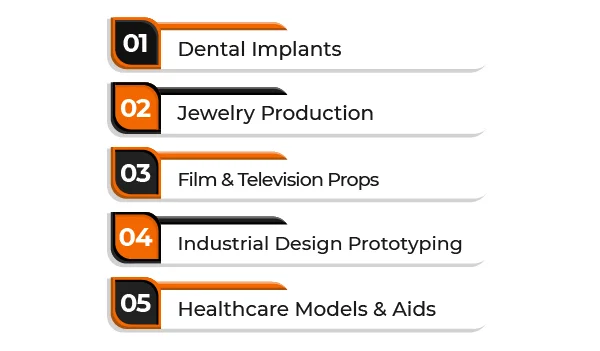Exploring the Versatility of 3D Printing: A Comprehensive Guide to Applications in FDM, SLS, and SLA Technologies
3D printing applications, also known as additive manufacturing, has revolutionized the manufacturing industry by enabling the creation of complex designs and structures with greater precision and speed. It uses a layer-by-layer approach to create a physical object from a digital design, making it possible to achieve intricate shapes that are impossible to achieve using traditional manufacturing methods. This technology has impacted various industries, from aerospace to healthcare, and has the potential to transform many more.
Understanding the applications of different 3D printing technologies is crucial as each technology offers unique benefits and limitations. This comprehensive guide explores the versatility of 3D printing by examining the applications of three popular 3D printing technologies – Fused Deposition Modeling (FDM), Selective Laser Sintering (SLS), and Stereolithography (SLA).
Applications of FDM 3D Printing

FDM is a popular choice for prototyping and low-volume production due to its affordability and simplicity. It uses a thermoplastic filament that is melted and extruded through a nozzle to create layers, which then solidify to form a 3D object.
Some benefits of FDM include its low cost, ease of use, and versatility in material selection. However, it has limitations such as limited resolution, surface finish, and susceptibility to warping and distortion.
Rapid Prototyping
FDM is commonly used for rapid prototyping as it allows designers to quickly create physical models of their designs for testing and validation. This can save time and money by identifying design flaws early in the development process. Real-world examples include the automotive industry, where FDM is used to create prototype parts for testing and refinement.
Some unique advantages of FDM for rapid prototyping include its low cost compared to other 3D printing technologies, versatility in material selection, and ease of use.
Manufacturing Tools and Jigs
FDM is also used to create custom manufacturing tools and jigs, such as assembly fixtures and drill guides. This can improve efficiency and accuracy in manufacturing processes. Real-world examples include the aerospace industry, where FDM is used to create specialized tools for aircraft assembly.
Some unique advantages of FDM for manufacturing tools and jigs include its low cost, customizability, and ability to create complex shapes and features.
Education and Research
FDM is also used in educational settings for teaching design and prototyping skills to students. It is also used in research settings for creating custom laboratory equipment and aids for experiments.
Some unique advantages of FDM for education and research include its low cost, ease of use, and versatility in material selection.
Medical Applications
FDM is used in the medical industry to create customized prosthetics and surgical guides. This allows for a more precise fit and improved patient outcomes. Real-world examples include the creation of 3D printed surgical guides for spinal surgeries.
Some unique advantages of FDM for medical applications include its ability to create customized designs, low cost, and ease of use.
Architecture and Construction
FDM is also used in the architecture and construction industry to create large-scale models and prototypes. This allows architects to visualize and make adjustments to their designs before construction begins.
Some unique advantages of FDM for architecture and construction include its ability to create large-scale models, customizability, and low cost compared to traditional model-making methods.
Applications of SLS 3D Printing

SLS uses a laser to fuse together powdered materials, such as nylon or metal, to create a solid object. This technology is commonly used in industries such as aerospace, automotive, and healthcare.
Some benefits of SLS include its ability to create complex geometries, high resolution, and use of a wide range of materials. However, it has limitations such as high cost and limitations in part size.
Aerospace Components
SLS is commonly used in the aerospace industry to create lightweight, complex components for aircraft and satellite applications. Real-world examples include the creation of SLS-printed rocket engine components.
Some unique advantages of SLS for aerospace components include its ability to create complex geometries, lightweight designs, and use of high-performance materials.
Automotive Parts
SLS is also used in the automotive industry to create lightweight, high-performance parts for cars and motorcycles. Real-world examples include the creation of SLS-printed intake manifolds and transmission components.
Some unique advantages of SLS for automotive parts include its ability to create lightweight designs, use of high-performance materials, and the ability to produce complex geometries.
Medical Implants
SLS is used in the medical industry to create custom implants, such as cranial and facial implants. Real-world examples include the creation of SLS-printed hip implants.
Some unique advantages of SLS for medical implants include its ability to create custom designs, use of biocompatible materials, and high resolution.
Consumer Products
SLS is also used in the production of consumer products such as eyewear, footwear, and fashion accessories. Real-world examples include the creation of SLS-printed eyeglass frames.
Some unique advantages of SLS for consumer products include its ability to create complex geometries, use of a wide range of materials, and high resolution.
Tooling and Manufacturing Aids
SLS is used to create custom tooling and manufacturing aids, such as jigs and fixtures, for the manufacturing industry. This allows for greater efficiency and accuracy in the manufacturing process.
Some unique advantages of SLS for tooling and manufacturing aids include its ability to create complex geometries, low production time, and use of high-performance materials.
Applications of SLA 3D Printing

SLA uses a laser to solidify liquid resin layer-by-layer to create a solid object. This technology is commonly used in industries such as healthcare, jewelry, and entertainment.
Some benefits of SLA include its high resolution, ability to create intricate details, and use of a wide range of materials. However, it has limitations such as high cost and limited part size.
Dental Implants
SLA is used in the dental industry to create custom dental implants, such as crowns and bridges. Real-world examples include the creation of SLA-printed dental implants.
Some unique advantages of SLA for dental implants include its high resolution, ability to create intricate details, and use of biocompatible materials.
Jewelry Production
SLA is also used in the jewelry industry to create customized designs with intricate details. Real-world examples include the creation of SLA-printed jewelry with complex geometries and fine details.
Some unique advantages of SLA for jewelry production include its high resolution, ability to create intricate details, and use of a wide range of materials.
Film and Television Props
SLA is used in the entertainment industry to create customized props and models for films and television shows. Real-world examples include the creation of SLA-printed models for the film industry.
Some unique advantages of SLA for film and television props include its high resolution, ability to create intricate details, and use of a wide range of materials.
Industrial Design Prototyping
SLA is used in the industrial design industry for prototyping and validation of designs. This allows designers to make adjustments to their designs before production begins.
Some unique advantages of SLA for industrial design prototyping include its high resolution, ability to create intricate details, and use of a wide range of materials.
Healthcare Models and Aids
SLA is used in the healthcare industry to create customized models and aids for surgeries, such as surgical guides and anatomical models. Real-world examples include the creation of SLA-printed anatomical models for surgical planning.
Some unique advantages of SLA for healthcare models and aids include its high resolution, ability to create intricate details, and use of biocompatible materials.
Conclusion
This comprehensive guide has explored the versatility of three popular 3D printing technologies – FDM, SLS, and SLA – by examining their respective applications. Each technology offers unique benefits and limitations, making it crucial to understand their use cases and potential applications. From prototyping to production, 3D printing technologies have the potential to transform various industries and push the boundaries of design and manufacturing. As the technology continues to evolve, we can expect to see even more advancements and innovations in the field.
Leave a Reply